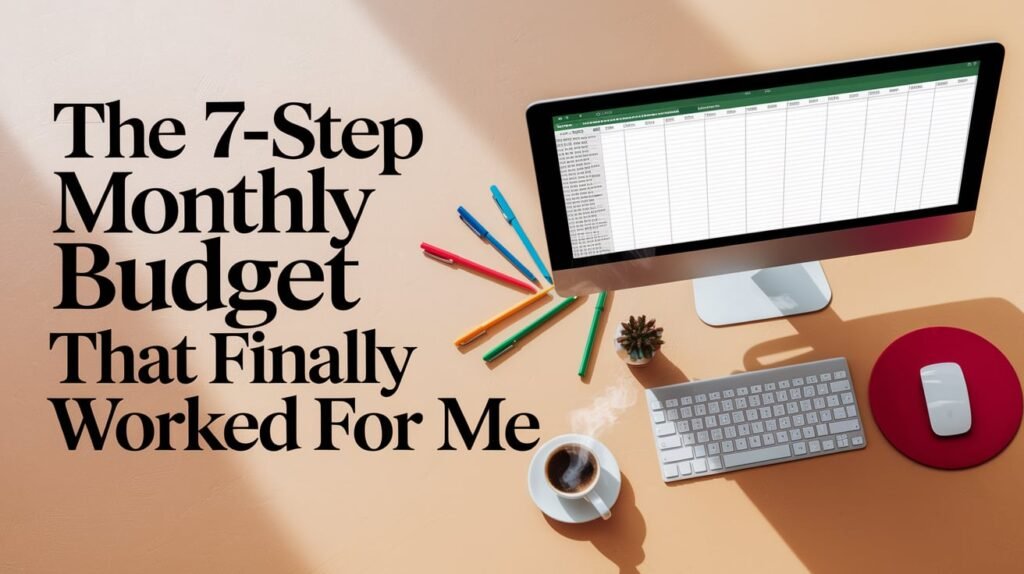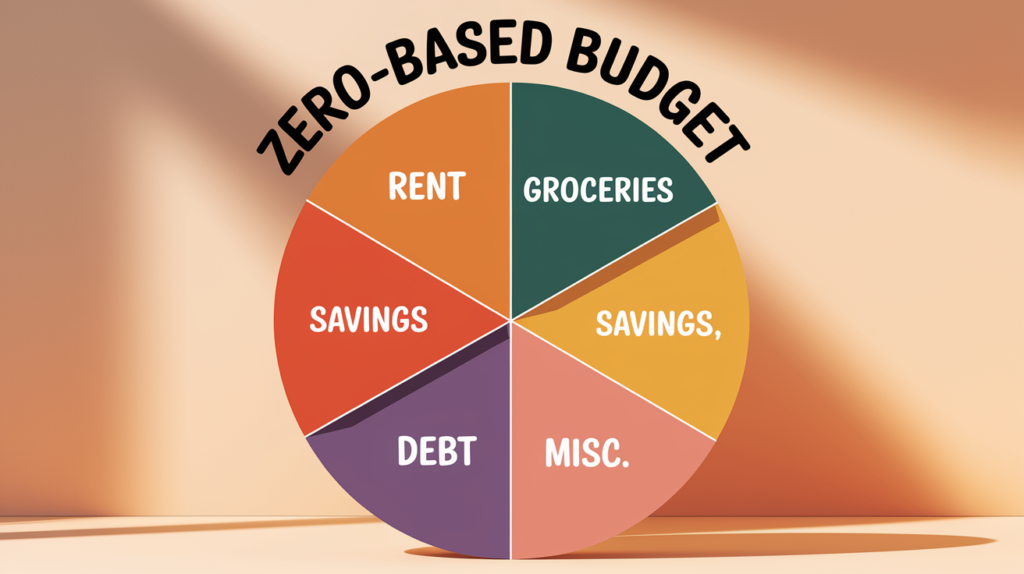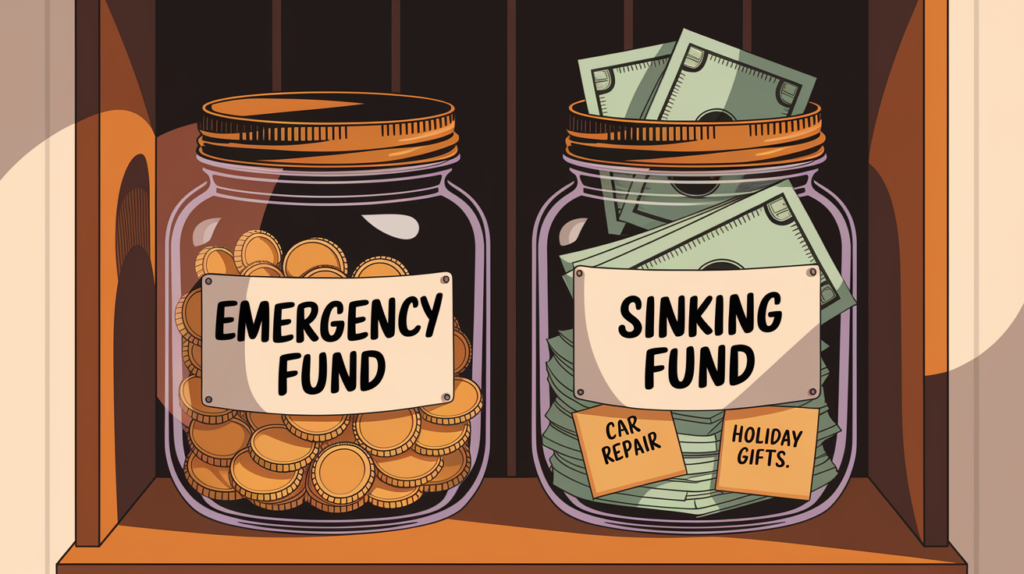
Master Your Money: The Monthly Budget That Fits Real Life
Creating a monthly budget isn’t about restriction—it’s about clarity, confidence, and control. If you’ve ever felt like your money disappears too fast or your goals stay out of reach, it’s time to try a system that actually works with your lifestyle. Whether you earn a fixed salary, freelance, or live on irregular income, this 7-step guide will help you build a realistic budget that adapts to your life—not the other way around. Let’s break it down and make your money work smarter, not harder.
Here’s a proven 7-step method that you can adjust for your lifestyle, income, and goals.
Step 1: Know Exactly What You Earn Each Month
Start by listing your total take-home pay:
- Salary after taxes
- Side hustle income
- Passive income
- Benefits (if any)
Tip: If your income varies, use the lowest average of the last 3 months. That way, your budget never breaks when business slows down.

Step 2: List All Monthly Expenses
Group them as:
Fixed Expenses (same every month):
- Rent/mortgage
- Insurance
- Subscriptions
- EMIs
Variable Expenses (change monthly):
- Groceries
- Fuel
- Dining out
- Personal care
- Kids’ school expenses
Use past bank statements or apps to get real with your numbers.
Step 3: Set Monthly Goals for Savings, Debt & Giving
This is where you shift from “paycheck survivor” to “money planner.”
Decide how much you’ll:
- Add to savings
- Invest
- Put toward debt (credit cards, loans)
- Donate or give
Even $50/month toward savings builds momentum. Consistency > amount.

Step 4: Create a Zero-Based Monthly Budget
What’s zero-based budgeting?
It means assigning every dollar a job so income – expenses = $0
(This doesn’t mean spending it all. “Saving” is a job too!)
Example:
| Category | Amount |
| Rent | $1,000 |
| Groceries | $350 |
| Utilities | $150 |
| Transport | $100 |
| Debt Payment | $200 |
| Savings | $300 |
| Fun/Personal | $150 |
| Misc Buffer | $50 |
| Total | $2,300 |
If your income is $2,300 → You’re done! Every dollar is working.
Step 5: Use Sinking Funds for Predictable but Irregular Expenses
Sinking funds are mini savings buckets for big expenses that don’t hit every month.
Examples:
- Car maintenance
- Holidays
- Back-to-school shopping
- Annual subscriptions
Instead of panicking when those bills arrive, you plan ahead.
Example:
Christmas budget = $600 → Save $50/month from January to December

Step 6: Add a Buffer for the Unexpected
Life happens. Add a $50–$100 line in your budget labelled “buffer” or “miscellaneous”.
This gives you flexibility when something unplanned pops up (like a friend’s wedding or a flat tire).
Step 7: Check In Weekly
This is the game-changer.
Don’t just set it and forget it. Make time once a week (Friday night or Sunday morning!) to review:
- Did any category run over?
- Any upcoming expenses?
- Can you move money between categories?
This keeps your budget flexible and functional—not restrictive.
Real-Life Examples of Monthly Budget Use Cases
- Single mom with part-time job: Uses monthly plan to cover daycare, groceries, rent, and track child-related costs
- Freelancer: Plans based on average monthly earnings + uses biweekly breakdowns to manage inconsistent pay
- Young couple: Shares fixed expenses, budgets variable separately, saves for joint goals
- College student: Budgets allowance + part-time job income to avoid overdrafts and set aside for textbooks
No matter your life situation, a monthly budget can adapt to you.

Monthly Budget Mindset Shifts That Help You Stick With It
- Your budget is a plan, not a prison
- It’s okay to adjust mid-month
- Overestimating expenses > underestimating them
- Tracking ≠ judging — it’s just awareness
- Saving “small” amounts is still progress
- You don’t need to be perfect—just consistent
Bonus: How to Combine Monthly + Biweekly Budgeting
Let’s say you get paid biweekly.
Each month, create your master budget. Then, break that into two mini budgets based on your pay dates:
- Paycheck 1: Cover 1st half expenses (rent, groceries, etc.)
- Paycheck 2: Cover 2nd half (utilities, debt, fun money, etc.)
If you get a third paycheck in any month (which happens 2x a year), treat it like a bonus:
- Put toward savings, investments, or debt
- Don’t let it disappear into random spending
Final Thoughts : Monthly Budgeting = Monthly Empowerment
Budgeting doesn’t limit your lifestyle. It protects your goals.
Every dollar you give a job brings you closer to the life you want:
- Less financial anxiety
- More confidence
- Freedom to say yes to what matters most
Even if you’ve failed budgets before, this time is different—because you’re building one that works for your real life.